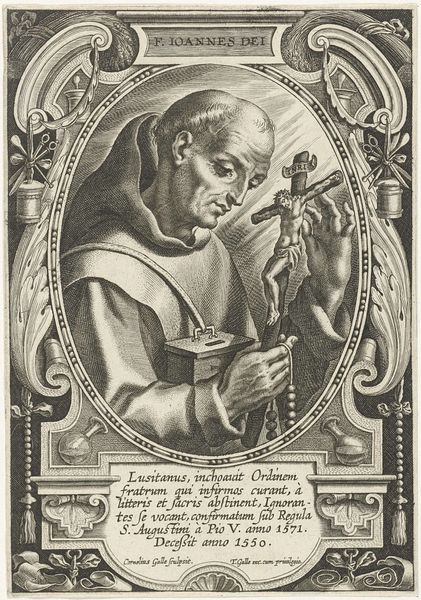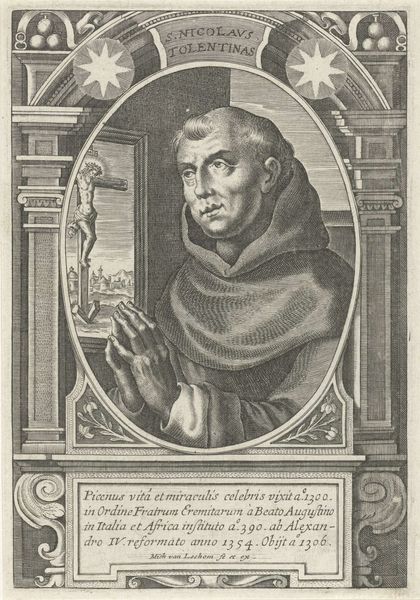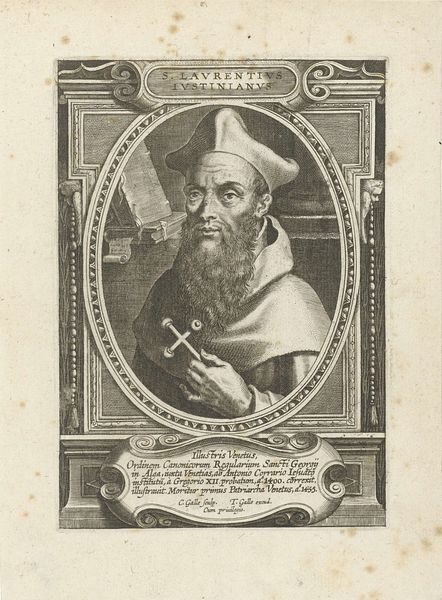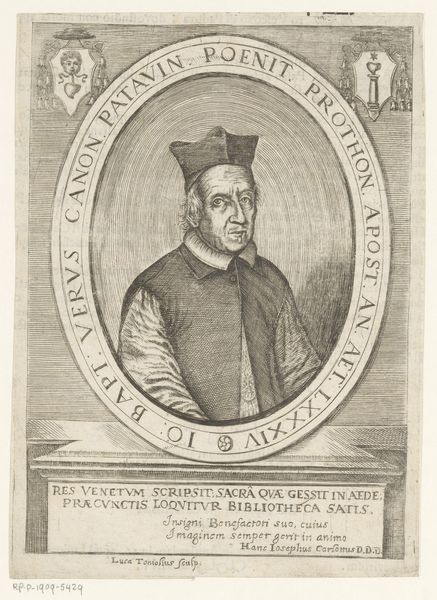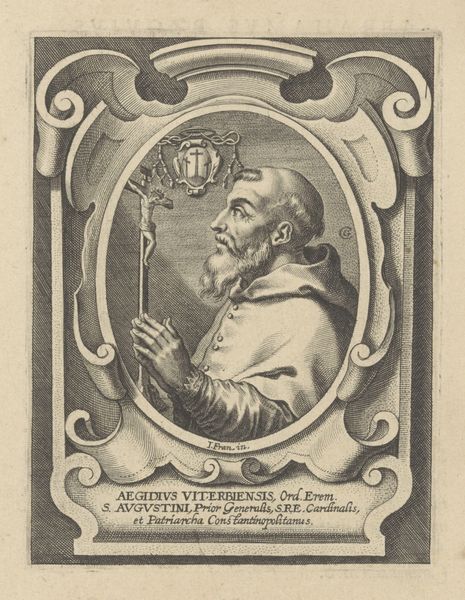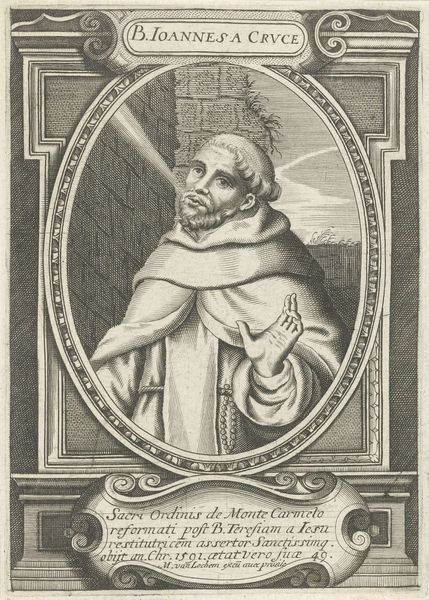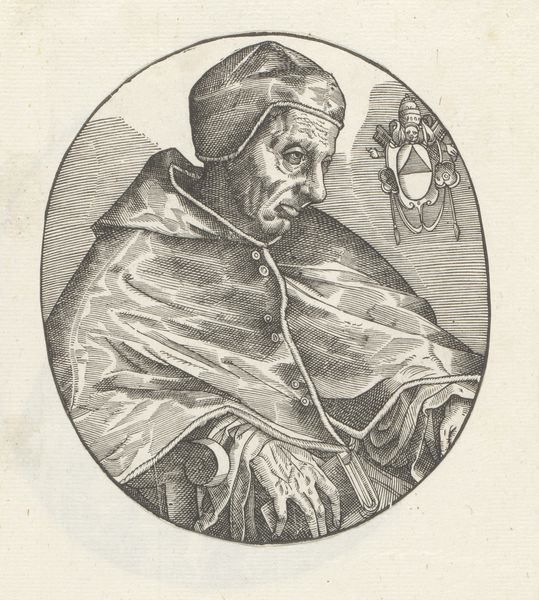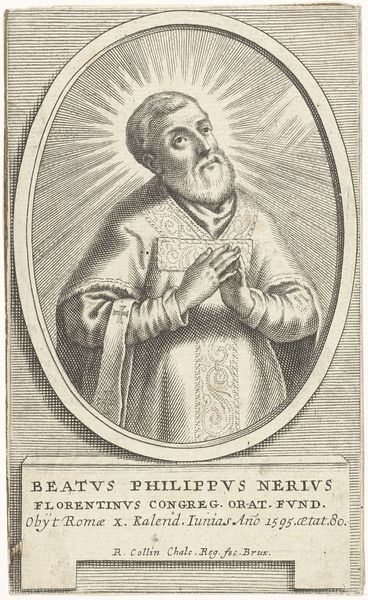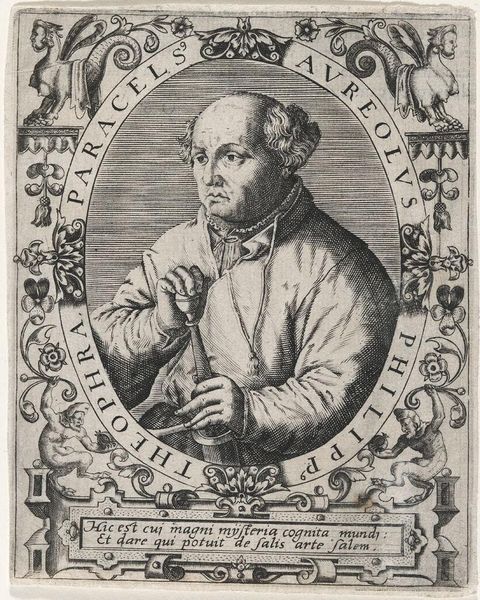
print, engraving
#
portrait
#
baroque
# print
#
old engraving style
#
figuration
#
line
#
engraving
Dimensions: height 135 mm, width 105 mm
Copyright: Rijks Museum: Open Domain
Editor: This is a print, an engraving titled "Portrait of the Augustinian Giles Colonna Romanus," created in 1636 by Cornelis Galle I. It's quite formal, even severe. What strikes you most about this piece? Curator: Immediately, I’m drawn to how this print participates in a larger system of visual representation of religious figures. Prints like these served a vital function in disseminating images of authority and piety, especially during the Counter-Reformation. Notice how the elaborate frame and Latin inscription below serve to enhance Colonna's status and legitimacy. The text specifies his positions and relations with high political actors. What statement is the artist trying to convey? Editor: I suppose it's about power and influence within the Church. Is the visual style of the baroque significant here? Curator: Absolutely. The Baroque, with its emphasis on drama and grandeur, was heavily employed by the Catholic Church to reassert its authority. Here, the intricate detail of the engraving, particularly in the frame and the subject's garments, reflects that sensibility. These visual cues solidified social hierarchies and reinforced the Church's image. How do you think people at the time might have received this print? Editor: Maybe with reverence, seeing it as a reminder of the Church's enduring power? Curator: Precisely. It’s also fascinating to consider where and how such prints would circulate. Were they primarily for private devotion, or did they have a more public function, reinforcing the Church’s presence in civic life? These are the questions we must ask when analyzing the public role of art. Editor: That’s a completely different perspective than what I usually consider when looking at art. Thank you for providing such insightful historical background. Curator: It's a pleasure to reveal the deeper implications of historical imageries. It provides a lens into the motivations behind artistic creation and its significance in contemporary society.
Comments
No comments
Be the first to comment and join the conversation on the ultimate creative platform.
